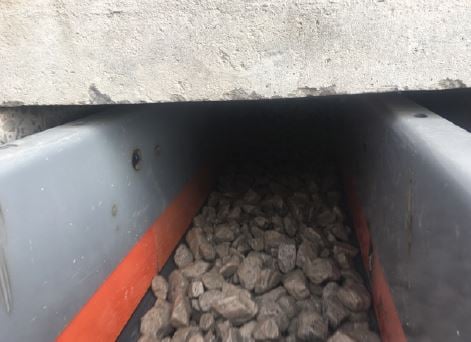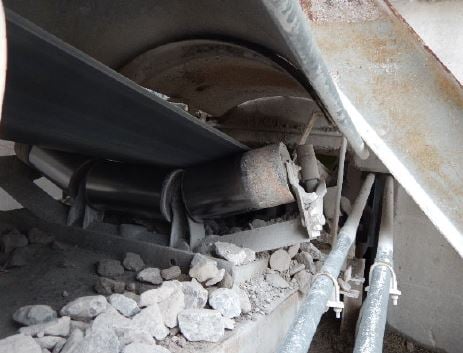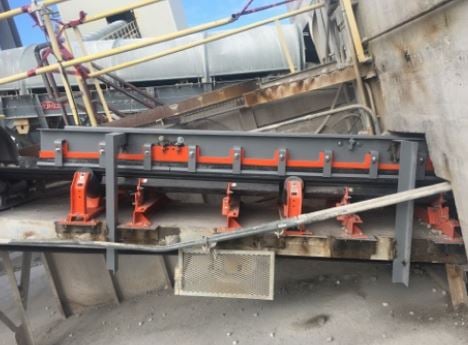By Chelsea Blake on Oct 28, 2022 12:22:16 PM
If your conveyor belt spills material and your crew spends time cleaning up fugitive material, you have a terrifying situation on your hands. This operation was experiencing some of the same spooky issues. Keep reading to see how they improved their operation.
Since Halloween is next week, I interrupt our normal blog-style posts to bring you this spooky story. Enjoy...or else! 👻
Problem
A large quarry in Michigan processes about 2,000 tons of limestone per day, producing high-calcium quicklime to serve the upper Midwestern states and Central Canada. The plant's incline belt was dangerously spilling product at the transfer point, particularly where the trough angle increased from 20° to 35°. Cleanup required approximately six scary hours of labor time per ton, at an estimated cost of more than a terrifying $200,000 annually when including labor and lost productivity. Lost material added another spine-chilling $50,000 to that figure. Further, personnel was threatened when eerily introduced to potential injury from working around the moving conveyor - a potential villain.

Solution
Martin Engineering technicians bravely evaluated the treacherous situation and determined that the belt lacked adequate support and effective sealing as it traveled a short distance through the 12-foot transfer point. The transition to 35° disrupted the load and created fugitive material. To address the issue, they removed the existing chute wall, skirting, and idlers, and lengthened the transfer point by four feet. The techs then installed three  as well as one
as well as one  , and two
, and two  . These were followed by a modular chute wall assembly with a
. These were followed by a modular chute wall assembly with a  ,
,  , and
, and  .
.
Results
Having proper belt support has greatly stabilized the load, and the new chute wall, wear liner, and apron seal are able to fully contain the material flow throughout the longer transfer point. The load is centered and transitions smoothly to the deep trough angle. Spillage has been slashed, improving the operation's cost-effectiveness and safety. Maintenance staff can now concentrate on other activities. "There's no more spillage to clean up at this transfer point," said a spokesperson. "We are planning on having Martin Engineering install a similar system on our west belt."
 If you see frightening warning signs, don't hesitate to take steps toward a CLEANER, SAFER, & MORE PRODUCTIVE operation.
If you see frightening warning signs, don't hesitate to take steps toward a CLEANER, SAFER, & MORE PRODUCTIVE operation.




comments